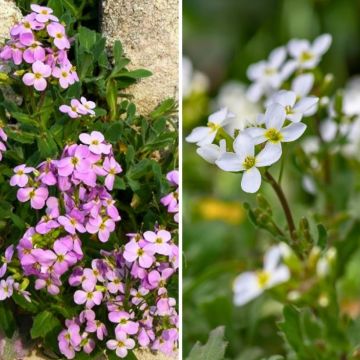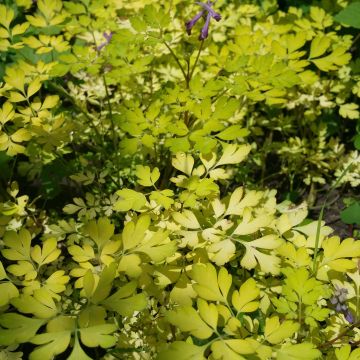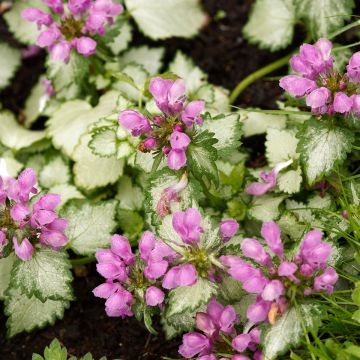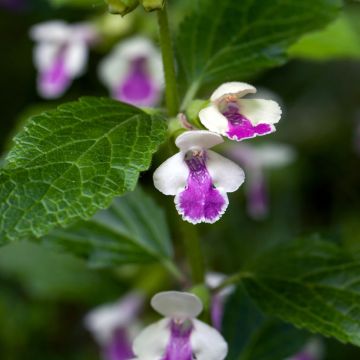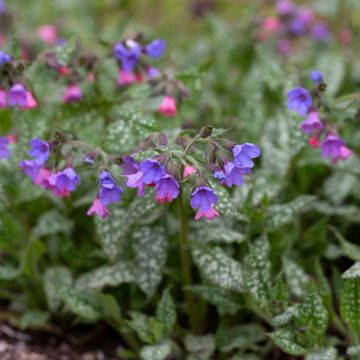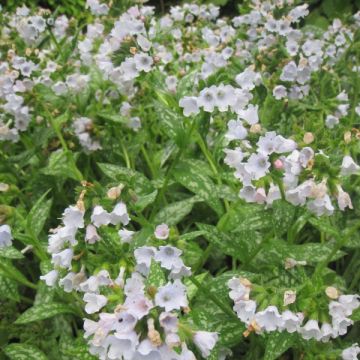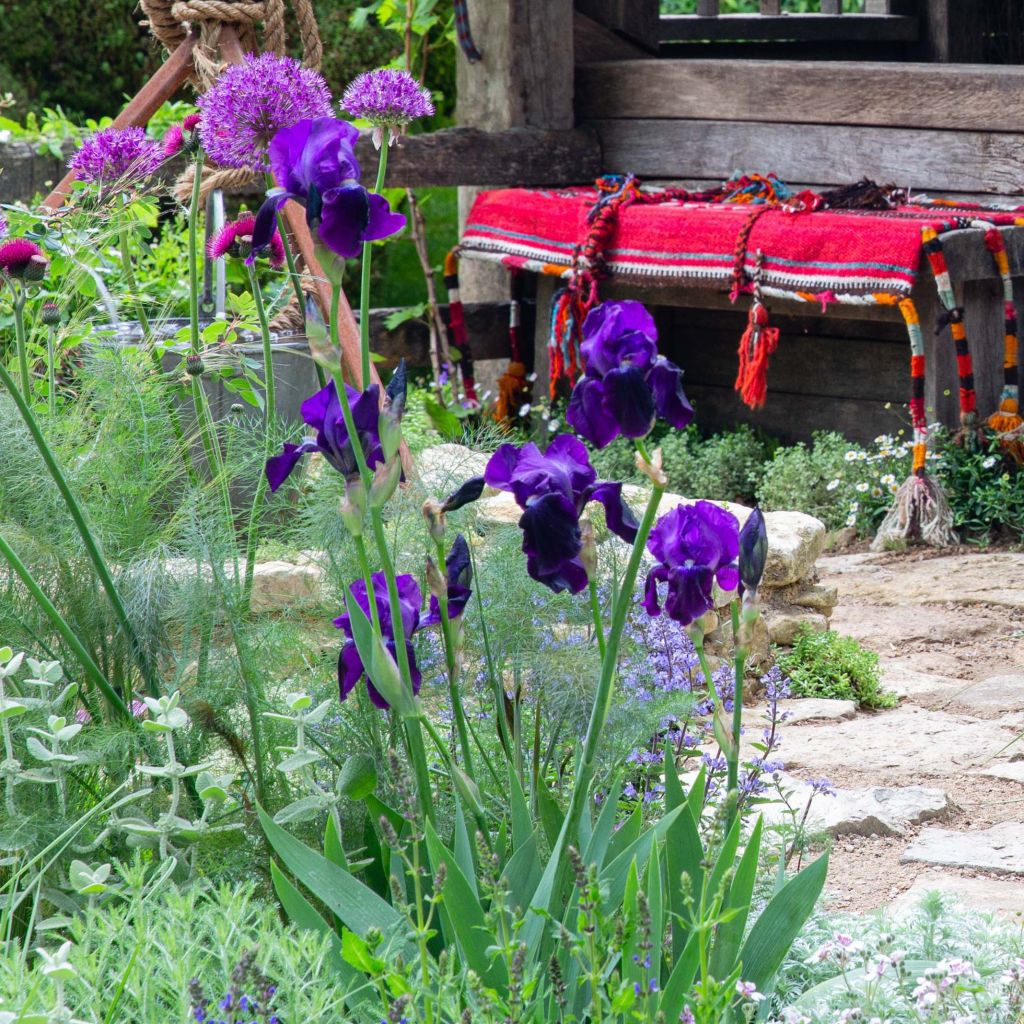

Iris germanica Black Knight - Bearded Iris
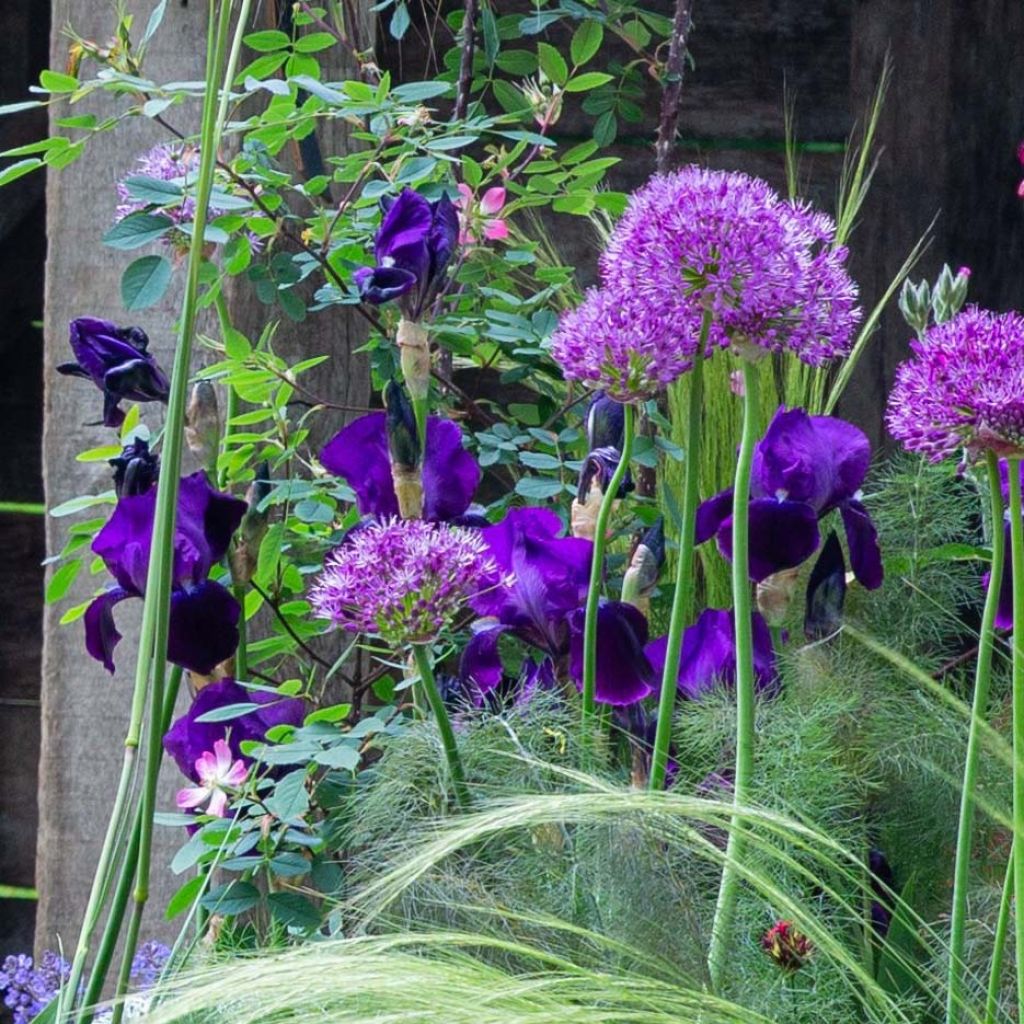

Iris germanica Black Knight - Bearded Iris
View more pictures
Hide images
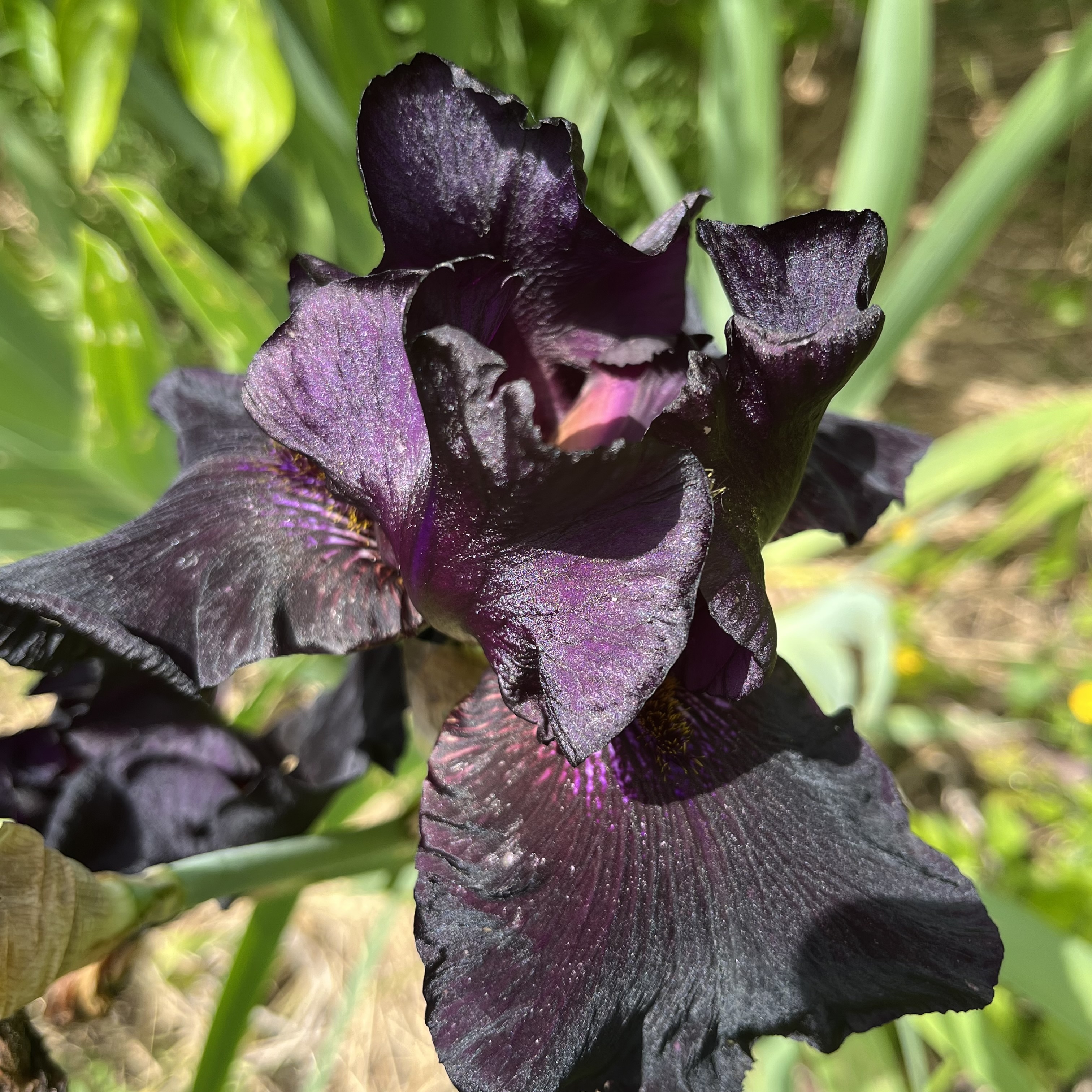
Anna L.

Anna L. • 01 FR
Iris germanica Black Knight - Bearded Iris
Iris germanica Black Knight
German Iris, Bearded Iris
The plants that did not take have been refunded. Thank you very much.
Marie, 21/10/2024
Special offer!
Receive a €20 voucher for any order over €90 (excluding delivery costs, credit notes, and plastic-free options)!
1- Add your favorite plants to your cart.
2- Once you have reached €90, confirm your order (you can even choose the delivery date!).
3- As soon as your order is shipped, you will receive an email containing your voucher code, valid for 3 months (90 days).
Your voucher is unique and can only be used once, for any order with a minimum value of €20, excluding delivery costs.
Can be combined with other current offers, non-divisible and non-refundable.
Home or relay delivery (depending on size and destination)
Schedule delivery date,
and select date in basket
This plant carries a 12 months recovery warranty
More information
We guarantee the quality of our plants for a full growing cycle, and will replace at our expense any plant that fails to recover under normal climatic and planting conditions.
Would this plant suit my garden?
Set up your Plantfit profile →
Description
The 'Black Knight' German Iris is an old garden iris variety that is still popular for its almost black navy blue flowering. Its silky flower, with a classic shape, displays a very dark violet colour, very uniform, with black reflections on the sepals. This medium-sized variety will withstand the wind better. It is easy to cultivate and will bring life to rock gardens and sunny beds between May and June. With good vase life and a pleasant fragrance, the flowers are also beautiful in bouquets.
The 'Black Knight' Iris is a rhizomatous perennial plant that develops from spring in elegantly upright clumps, with its foliage disappearing in winter. It belongs to the Iridaceae family. It is one of the many cultivars obtained over centuries, whose controversial origin is debated around the number of chromosomes of potential ancestors. It should be noted that Garden Iris have European origins. They are plants that thrive in limestone soils and require plenty of sunlight, with the rhizomes needing to 'bake' in summer in order to flower. A minimum of 6 hours of sunlight per day is generally required.
'Black Knight' will reach approximately 75cm (30in) in height when in flower, with multiple buds per stem. The clump will spread indefinitely over time, with the centre rhizomes becoming bare in favour of the outer rhizomes. The foliage consists of long and wide sword-shaped leaves, with a slightly glaucous green colour, traversed by parallel veins. It is a mid-season variety: in April, floral stems appear that will give flowers blooming from the top to the lower branches during the month of May. The intense colour of this plant is, as always with Garden Iris, enhanced by the thick and iridescent texture of the floral parts. At the base of each sepal, towards the heart of the flower, there is a small hairy beard of golden to bronze colour.
To accompany irises, choose plants to associate with them based on their needs (exposure, soil...), their "respectful" growth towards irises (low plants or light foliage), and their decorative complementarity (appearance, flowering date). For example, Gaura will provide little shade to the irises and will keep the deflowered iris bed attractive throughout the summer. Eschscholzia will thrive in a dry summer soil, just like the iris. Geraniums, salvias, and Libertia also go very well with irises. Slopes and terraced edges will be stabilized by a dense planting of old diploid varieties that can remain in place and require little care. If the goal is more decorative and access for care is possible, you can choose more modern varieties, such as intermediates that will be less likely than the tall ones to be literally laid flat on the ground by the wind and rain.
Iris germanica Black Knight - Bearded Iris in pictures
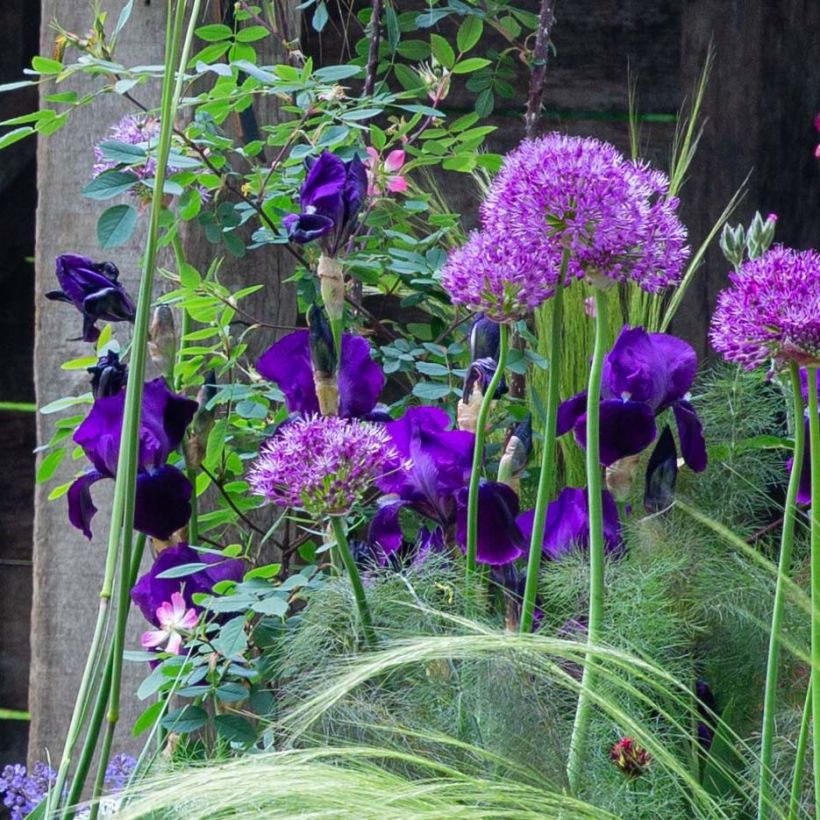

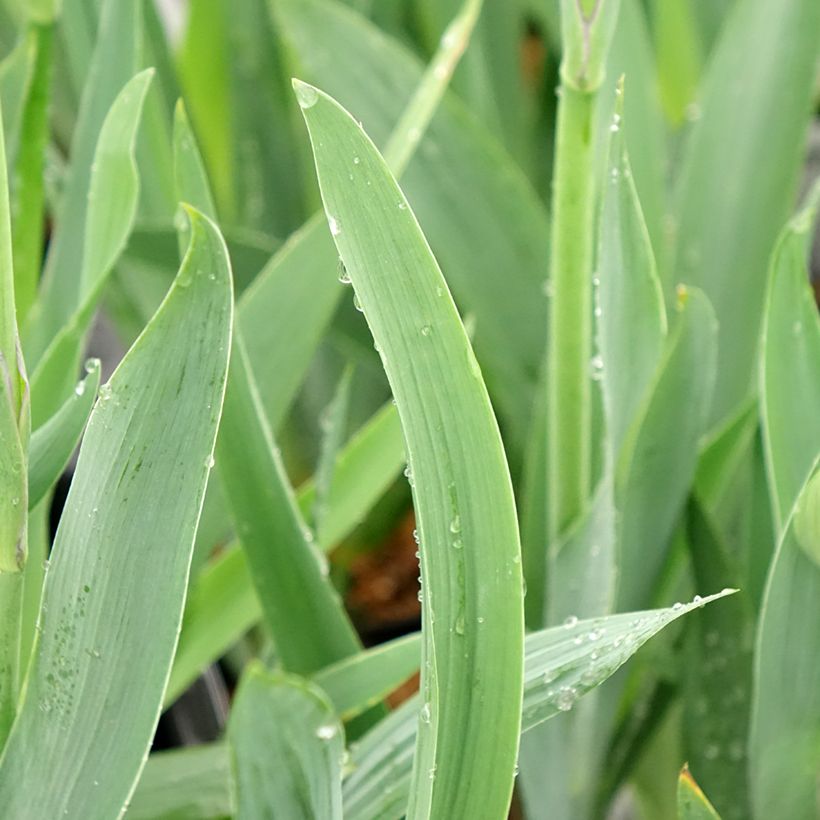

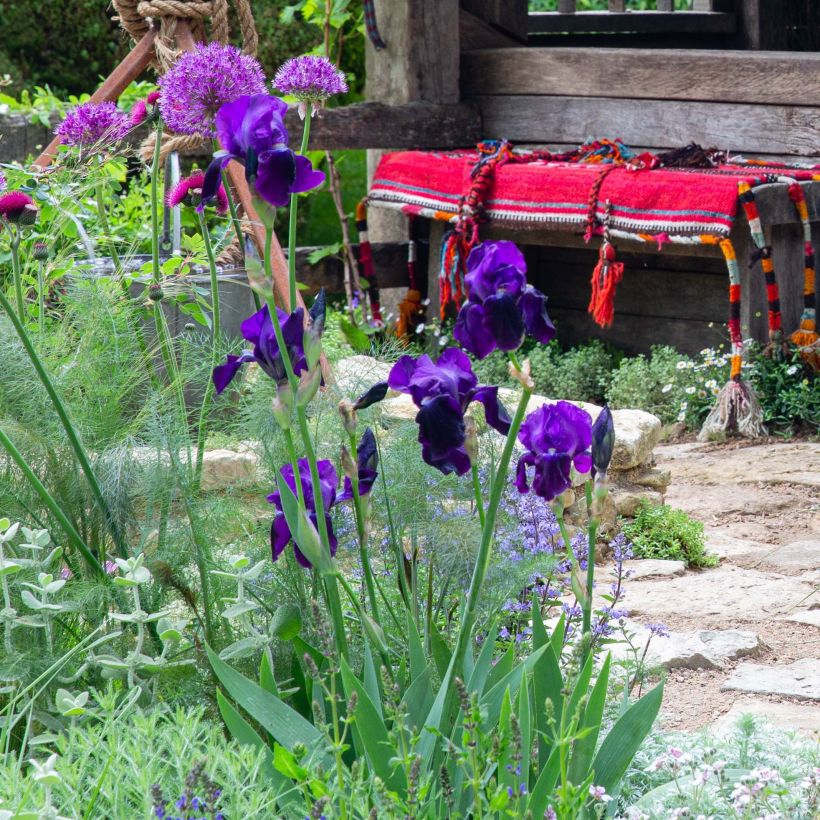

Flowering
Foliage
Plant habit
Botanical data
Iris
germanica
Black Knight
Iridaceae
German Iris, Bearded Iris
Cultivar or hybrid
Planting and care
Iris germanica should be planted in summer, in August-September, when the rootstocks are at rest. They require a well-drained, calcareous and well-tilled soil that does not retain too much water. Provide a spacing appropriate to the size and vigour of the variety: about 34-50cm (13-20in) for the tall ones (5 to 10 feet per square metre). Dig a hole that is wide and deep enough. Create a conical mound of soil on which the rootstock and spread out roots are placed. Cover the roots. It is important for the rootstock to be left exposed at the surface of the soil. It should not be planted in a basin (risk of rot), so anticipate that the soil will settle and the iris will sink. In clayey or wet soil, the rootstock should even be left elevated on a slight mound of a few centimetres. To make the soil adhere to the roots, lightly tamp the soil and water it abundantly after planting. Water 2-3 times if necessary until it takes root. For a mix of colours, it is recommended for the overall aesthetic of the iris bed to plant them in groups of several plants of the same variety. Always consider the direction of growth of the rootstocks by arranging them in a star shape, with buds and leaves facing outwards, and spacing them well from other varieties so they have room to develop.
As soon as the flower stalks appear, watch out for attacks from gastropods, capable of completely destroying a flower stalk overnight by cutting it off.
Planting period
Intended location
Care
Planting & care advice
-
, onOrder confirmed
Reply from on Promesse de fleurs
Similar products
Haven't found what you were looking for?
Hardiness is the lowest winter temperature a plant can endure without suffering serious damage or even dying. However, hardiness is affected by location (a sheltered area, such as a patio), protection (winter cover) and soil type (hardiness is improved by well-drained soil).

Photo Sharing Terms & Conditions
In order to encourage gardeners to interact and share their experiences, Promesse de fleurs offers various media enabling content to be uploaded onto its Site - in particular via the ‘Photo sharing’ module.
The User agrees to refrain from:
- Posting any content that is illegal, prejudicial, insulting, racist, inciteful to hatred, revisionist, contrary to public decency, that infringes on privacy or on the privacy rights of third parties, in particular the publicity rights of persons and goods, intellectual property rights, or the right to privacy.
- Submitting content on behalf of a third party;
- Impersonate the identity of a third party and/or publish any personal information about a third party;
In general, the User undertakes to refrain from any unethical behaviour.
All Content (in particular text, comments, files, images, photos, videos, creative works, etc.), which may be subject to property or intellectual property rights, image or other private rights, shall remain the property of the User, subject to the limited rights granted by the terms of the licence granted by Promesse de fleurs as stated below. Users are at liberty to publish or not to publish such Content on the Site, notably via the ‘Photo Sharing’ facility, and accept that this Content shall be made public and freely accessible, notably on the Internet.
Users further acknowledge, undertake to have ,and guarantee that they hold all necessary rights and permissions to publish such material on the Site, in particular with regard to the legislation in force pertaining to any privacy, property, intellectual property, image, or contractual rights, or rights of any other nature. By publishing such Content on the Site, Users acknowledge accepting full liability as publishers of the Content within the meaning of the law, and grant Promesse de fleurs, free of charge, an inclusive, worldwide licence for the said Content for the entire duration of its publication, including all reproduction, representation, up/downloading, displaying, performing, transmission, and storage rights.
Users also grant permission for their name to be linked to the Content and accept that this link may not always be made available.
By engaging in posting material, Users consent to their Content becoming automatically accessible on the Internet, in particular on other sites and/or blogs and/or web pages of the Promesse de fleurs site, including in particular social pages and the Promesse de fleurs catalogue.
Users may secure the removal of entrusted content free of charge by issuing a simple request via our contact form.
The flowering period indicated on our website applies to countries and regions located in USDA zone 8 (France, the United Kingdom, Ireland, the Netherlands, etc.)
It will vary according to where you live:
- In zones 9 to 10 (Italy, Spain, Greece, etc.), flowering will occur about 2 to 4 weeks earlier.
- In zones 6 to 7 (Germany, Poland, Slovenia, and lower mountainous regions), flowering will be delayed by 2 to 3 weeks.
- In zone 5 (Central Europe, Scandinavia), blooming will be delayed by 3 to 5 weeks.
In temperate climates, pruning of spring-flowering shrubs (forsythia, spireas, etc.) should be done just after flowering.
Pruning of summer-flowering shrubs (Indian Lilac, Perovskia, etc.) can be done in winter or spring.
In cold regions as well as with frost-sensitive plants, avoid pruning too early when severe frosts may still occur.
The planting period indicated on our website applies to countries and regions located in USDA zone 8 (France, United Kingdom, Ireland, Netherlands).
It will vary according to where you live:
- In Mediterranean zones (Marseille, Madrid, Milan, etc.), autumn and winter are the best planting periods.
- In continental zones (Strasbourg, Munich, Vienna, etc.), delay planting by 2 to 3 weeks in spring and bring it forward by 2 to 4 weeks in autumn.
- In mountainous regions (the Alps, Pyrenees, Carpathians, etc.), it is best to plant in late spring (May-June) or late summer (August-September).
The harvesting period indicated on our website applies to countries and regions in USDA zone 8 (France, England, Ireland, the Netherlands).
In colder areas (Scandinavia, Poland, Austria...) fruit and vegetable harvests are likely to be delayed by 3-4 weeks.
In warmer areas (Italy, Spain, Greece, etc.), harvesting will probably take place earlier, depending on weather conditions.
The sowing periods indicated on our website apply to countries and regions within USDA Zone 8 (France, UK, Ireland, Netherlands).
In colder areas (Scandinavia, Poland, Austria...), delay any outdoor sowing by 3-4 weeks, or sow under glass.
In warmer climes (Italy, Spain, Greece, etc.), bring outdoor sowing forward by a few weeks.











































